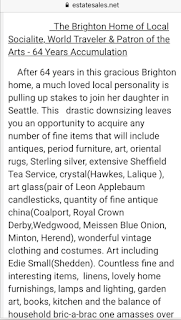When Bleu Cease, Executive Director and Curator of the RochesterContemporary Art Center, initially told me about the concept for this exhibit,
I was fascinated. The exhibit’s five artists explore loss and disappearance
through different media, and the effect is overwhelming.
 The first thing you see, entering the gallery, is Aaron
Miller’s installation of decay – two armchairs and a footstool that look like
they could have been in a fire, or would have been at home on a set of The Addams Family. It is "a chilling reminder of the relationships between fossil fuels, the environment, and domestic spaces." On the opposite wall,
you’re faced with a powerful message, Dorene Quinn’s History, which she describes this way:
The first thing you see, entering the gallery, is Aaron
Miller’s installation of decay – two armchairs and a footstool that look like
they could have been in a fire, or would have been at home on a set of The Addams Family. It is "a chilling reminder of the relationships between fossil fuels, the environment, and domestic spaces." On the opposite wall,
you’re faced with a powerful message, Dorene Quinn’s History, which she describes this way: “I have heard the phrase ‘the wrong side of history’
repeated more and more frequently in political and social discourse. These
words applied to climate change are prescient and we may have already entered
into this ‘other side’ in which much of the damage cannot be reversed. History
for now, is a human construct, and will cease when it is no longer recorded,
although we can’t help imagining a story beyond us.”
“I have heard the phrase ‘the wrong side of history’
repeated more and more frequently in political and social discourse. These
words applied to climate change are prescient and we may have already entered
into this ‘other side’ in which much of the damage cannot be reversed. History
for now, is a human construct, and will cease when it is no longer recorded,
although we can’t help imagining a story beyond us.”
That certainly puts things into perspective!
 |
| Passenger pigeon, extinct in 1914, due to habitat loss and overhunting |
 |
| Falkland Island wolf, hunted to extinction in 1876 |
Brandon Ballengee’s poignant series of historical
prints, Framework of Absence,
confronts the viewer with our current “biodiversity crisis, often referred to
as the…Sixth great extinction. Species are disappearing at upwards of a
thousand times the natural rate.” In response, Ballengee has gathered prints,
dating as far back as 1585, of various now-extinct animals, and removed the
image of the animal from the scene. He then burned the excised images and the
cremated remains are displayed in little jars. Not only is the negative space
in the prints haunting, but my initial reaction was – how could he defile a
historical work of art this way, even for the sake of art? Upon further
reflection, I wondered – how long can we humans continue to defile our planet
before we ourselves become endangered?
The lab space hosts Meredith Davenport’s moving 8,817 Goodbyes, a selection of photos
she took of dead bees from her urban beehive, which collapsed last October.
The exhibit’s weaving of environment, history, and art
is extremely sobering. It runs until November 13. And if you go in the next
week, you’ll be able to see Kevin Dartt’s outdoor installation What You Put In, a water-fountain
representation of the Great Lakes, which the artist hopes will encourage us
“not to abuse The Lakes and reminds us not to take fresh water for granted.”


























